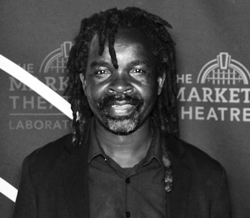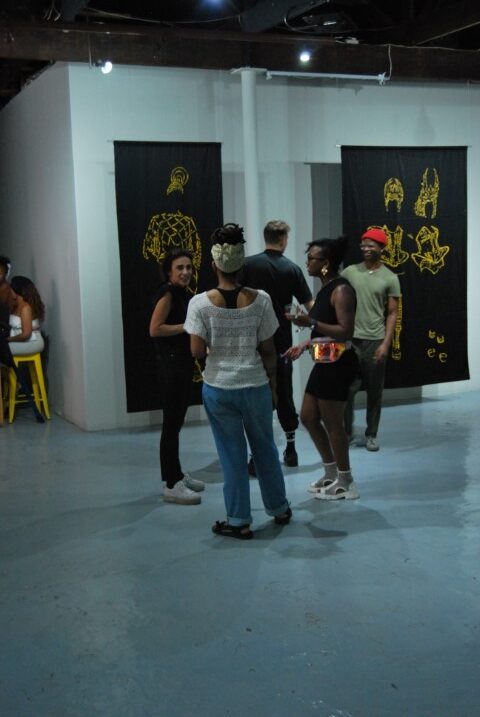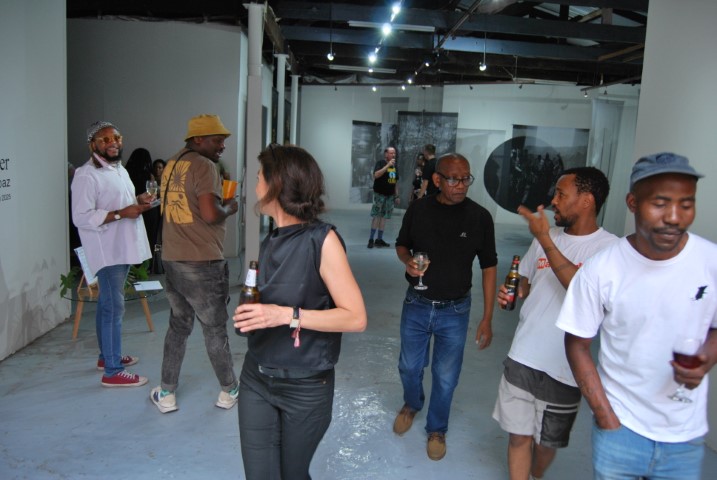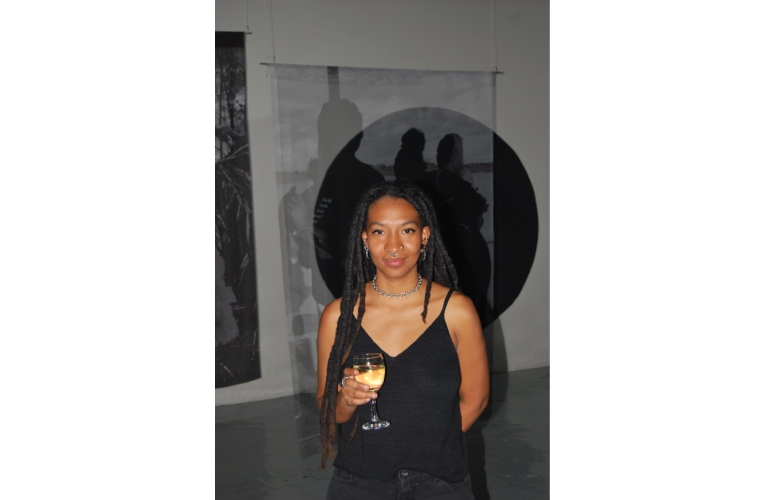Colombian artist Laura Campaz’s exhibition at Bag Factory explores the history and culture of Afro descendants in South America
By Edward Tsumele, CITYLIFE/ARTS Editor
Pictures By Wanda Gqala.

One thing you are going to notice as you enter the Bag Factory Artist Studio Gallery in Fordsburg, is the fact that the images in the form of photographs that are hanging from the roof held by a string are images of black and white digitally created images of black people. I immediately noticed that some are in Afro and others are wearing hairstyles that suggest some form of rebellion against something.

And indeed, they are rebellious in a way. These are not of people from South Africa, though you could easily think so by merely looking at these images. These could be images of hipsters that like to hang around and drink silly at Kichners Pub in Braamfontein, especially during the height of its popularity around 2014-2017, when there was so much promise about the revival of the City of Gold. The place attracted the young and the happening, particularly students from the surrounding tertiary institutions. That was though before the watering hole was temporarily closed last year, and now I hear that it has re-emerged after the renovation. Am not sure if it still attracts the same crowd that looked exactly like the images of mostly young and hippy -like black people that constitute this exhibition at Bag Factory.
These images and other representation mediums such as videos are of Africans in the diaspora, whose ancestors were forcibly taken from several parts of Africa into slavery in the West, and some ending up in this South American strange land called Colombia.
This exhibition is the work of artist Laura Campaz who has spent three months at the Bag Factory as a resident artist after which she had to put up an exhibition. Though the artist’s residency is done and in fact she was scheduled to fly back to her country on Friday, December 20, 2024, I had an opportunity to attend the opening with other art lovers on December 12, 2024 who had an opportunity to mingle and chat with the artist during the opening of the show.
“Darkness, like Glissant’s opacity[1], is both a refuge and resistance. It is a space where the visible fragments, where contours dissolve, and the power of black emerges in its deepest strength. This project explores the tension between what is hidden and what is revealed, between opacity that preserves and transparency that exposes.
In the selection of artworks presented, individuals’ clothing become the protagonist. In the dim light, the absence of the body is not a void, but a declaration: a challenge to the expectations of total visibility. Here, opacity does not seek to be understood or translated; it demands to be respected in its mystery, in the richness of what is not fully shown. For queer identities, opacity is vital: it protects and owns the spaces they occupy, resists pigeonholing, and the normative. It is a political and poetic gesture that affirms the right to exist without being completely unravelled.
The transparency of the fabrics used in the artworks presented – photographs and collages – create a poetic layering that interacts with one another. This layering does not seek clarity, but depth: it forces the gaze to move, to reconstruct, to accept the impossibility of a wholistic view. Transparency here does not illuminate but multiplies possibilities, evoking that identity, like the image, is not exhausted in a single layer, but affirms the importance of complexity.

In The Darkness, Black Becomes Power challenges the historical negative connotations associated with both the colour black and darkness. Instead of representing them as absence, danger, or void, this project reimagines them as symbols of strength, depth, and resistance and shows that black and darkness not only enclose mystery, but also carry beauty, richness, and power.
In this act, black is elevated as affirmation, as a space where what has been misunderstood can find its place as a new form of light … black light.
Central to Campaz’s practice is the exploration of the history and culture of Afro descendants, through the application of cyberethnography, exploring digital archives, internet symbols, and temporary files. Using techniques like collage, video, photography, and installation, her work sheds light on the intersections of race, ancestry, and territory,” the curators state.
This exhibition if anything reminds one of the resilience of the black body. Abused and made to look undignified by colonisres and slaveowners of the time, without of course success, viewing this exhibition makes one to conclude that indeed this abused black body has power, no matter how much those that wield power try to render it undignified, it remains defiant and rebellious to the core, remaining unbased by the brute violence visited on it over centuries.
In the Darkness: Black Becomes Power opened on December 12, 2024, and is running till 15 January, 15, 2025 at Bag Factory in Fordsburg, Johannesburg.










